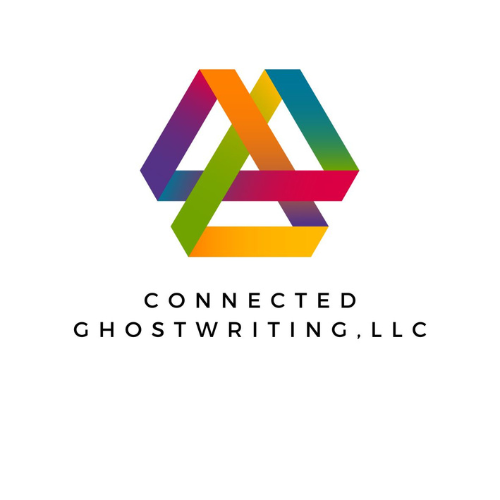The decision to share your story can be frightening. There is the fear of vulnerability, the fear of judgment, and the fear of not being heard or understood. Many aspiring authors find themselves standing on the precipice of writing, only to retreat into the safety of silence.
Yet, what if there was a remedy for fear? What if there was a cure that could encourage you to step into the spotlight and share your thoughts?
That cure is authenticity. It’s not a buzzword. In authenticity, we find a guiding principle to successful branding and personal storytelling. It resonates with audiences, forges genuine connections, and develops trust in a superficial world.
Therefore, to deal with the problem of fear and find your authentic voice, we will explore the following:
- Understanding Fear
- Authenticity in Branding
- Overcoming Fear
- Crafting Your Authentic Story
- The Impact of Authenticity
- Embrace Authentic Success
Through this analysis of fear and its antidote, you can build brand authenticity and fearlessly share your story.
Understanding the Fear
The first step is to understand the enemy, so here are some important aspects to consider:
Common Fears
One obstacle we face is the fear of judgment. There is the fear of criticism and rejection with the worry of how we will be perceived by others.
We also fear showing our vulnerabilities, like sharing our true emotions and struggles. We wonder if we’ll be rejected if we reveal too much.
Then, there’s the fear of failure. We worry that our story won’t resonate with others or that it won’t be well-received, which can shake our confidence and create self-doubt.
The Impact of Fear
Fear can become the silent saboteur of your brand story. It stifles creativity and erects barriers around your thoughts and ideas. It’s easy to find yourself imprisoned in your comfort zones. Fear weakens the impact of your brand message and diminishes your ability to stand out in a crowded marketplace. Brands that fail to confront their fears risk fading into obscurity. They become overshadowed by those brave enough to embrace vulnerability and transparency.
Authenticity in Branding
At its core, authenticity in storytelling is truthfulness, sincerity, and transparency. It’s the art of sharing your genuine and unfiltered narrative. When you are committed to authenticity, you are committed to the following:
- being true to your vision and mission statement
- staying faithful to what makes your brand unique
- making the effort to build trust
Authenticity vs. Perfection
Here’s some great news: You don’t have to be perfect. Being authentic is a wonderful alternative to perfection. It’s about embracing our flaws and accepting the messy, unpredictable parts of life. Authenticity reminds us that we’re all just real people.
Our struggles, mistakes, and setbacks often resonate deeply with others. Being authentic allows people to relate to us on a personal level as they follow our journey, experiencing both the highs and lows of our story.

Overcoming Fear
Vulnerability is not a weakness. It’s our superpower. It creates the authenticity that overcomes fear. Building brand trust comes from real stories, real experiences, and real connections.
Real Stories, Real Connections
Think about the famous Dove Campaign for Real Beauty. It changed the typical beauty standards by featuring real women of different shapes, sizes, and ages. Dove shared true stories of beauty and self-acceptance, creating a strong emotional connection with its audience. This showed Dove’s dedication to inclusivity.
Similarly, outdoor clothing company Patagonia has a loyal following because it shares real stories about caring for the environment. Initiatives like ‘Worn Wear’ encourage customers to trade in or buy used Patagonia gear. It promotes buying less, repairing more, and trading in gear when you no longer need it. Patagonia demonstrates commitment to sustainability, connecting with their audience, who care about the environment. These aren’t just marketing campaigns; they’re ways for companies to show social responsibility while connecting with people on a genuine level. Brand authenticity isn’t just about product functionality; it’s about the story behind it and the real connections it creates.
Practical Steps Toward Authenticity
Authenticity is the cure for fear. Here are some practical steps to help you embrace authenticity:
- Start small: Begin by sharing snippets of your story in safe, supportive spaces such as personal blogs, social media platforms such as Linkedin, or within trusted communities.
- Seek supportive communities: By sharing your fears and experiences with like-minded individuals, you can draw strength and encouragement from their shared journey.
- Focus on value: Shift your focus away from your fears and insecurities and concentrate on the value you can provide your audience. It’s much more than brand strategy. Your authentic story is an opportunity to inspire, educate, and empower.
Crafting Your Authentic Story
To craft an authentic story, it’s essential to first identify your core message, aligning it with your brand values, beliefs, and experiences.
Develop Your Core Message
Start by thinking about your life so far, both personally and professionally. What are the big moments, tough times, and successes that have made you who you are and shaped how you see the world? What beliefs are important to you? And what do you want people to understand about you? Once you’ve figured out the main thing you want to say, this is your core message. Next, write a short statement that sums up your message. This statement will help you tell your story and show people what you’re all about.
Storytelling Techniques
Now that you know what you want to say, it’s time to tell your story in an engaging way.
- Share Personal Stories: Talk about moments from your own life that people can relate to. It’s not just about your brand experience; it’s about making a personal connection.
- Open Up About Your Struggles: Don’t be afraid to talk about your mistakes and challenges. It’s these things that make you human and interesting.
- Stay True to Yourself: Whether you’re writing a blog, making a podcast, or posting on social media, make sure your messaging stays consistent and true to who you are. Brand consistency builds trust with your target audience. (This is a must if you want to use your writing to capture leads.)
- Appeal to Emotions: Use vivid descriptions, interesting stories, and honest conversations to allow people to feel your message. Emotions create customer experiences. When you connect with their emotions, you’ll make a lasting impression.
The Impact of Authenticity
Authenticity is a brand marketing strategy that drives tangible results. Marketing efforts and brand management show results when they are driven by your values, mission, and authentic story. There are two ways to view that impact. The first is through metrics, while the other is a more profound view of human connection. Let’s consider both.
Measuring the Impact
Some important measures and metrics can indicate how your message is resonating with your audience.
- Engagement: By analyzing metrics such as likes, shares, comments, and click-through rates, brands can gauge the effectiveness of capturing and maintaining audience attention.
- Brand Loyalty: By measuring metrics such as customer retention rates and repeat purchase behavior, you can assess the strength of your relationships and customer loyalty.
- Brand Health: This may include brand sentiment analysis, brand perception surveys, and qualitative feedback from customers.
More Than Branding
These numbers show how well your brand connects with people, but being real goes deeper than just branding tricks. It means being honest and sticking to your strong brand identity.
It’s not about pretending to be something you’re not to create the illusion of a successful brand image. It’s about connecting with your audience based on your core values. When you tell genuine stories, you build trust, respect, and word-of-mouth advertising.
Authenticity means being sincere and cutting through the superficial noise to make real connections.
Embrace Authentic Success
Vulnerability is your strength. Recognize that your story—flaws and all—is worth telling. To build your brand and tell your story, take those courageous steps toward authenticity, knowing that your voice can inspire.
As you do, we at Connected Ghostwriting are committed to walking with you on your fearless journey. One easy place to start is by sharing your thoughts in the comment section or on social media.
Then, when you’re ready to take your storytelling to the next level, download our Book Writing Starter Kit. This resource provides structure and guidance as you craft and share your authentic story with the world.
Don’t let fear hold you back any longer. Embrace authenticity, share your truth, and watch your narrative unfold in ways you’ve only imagined.


